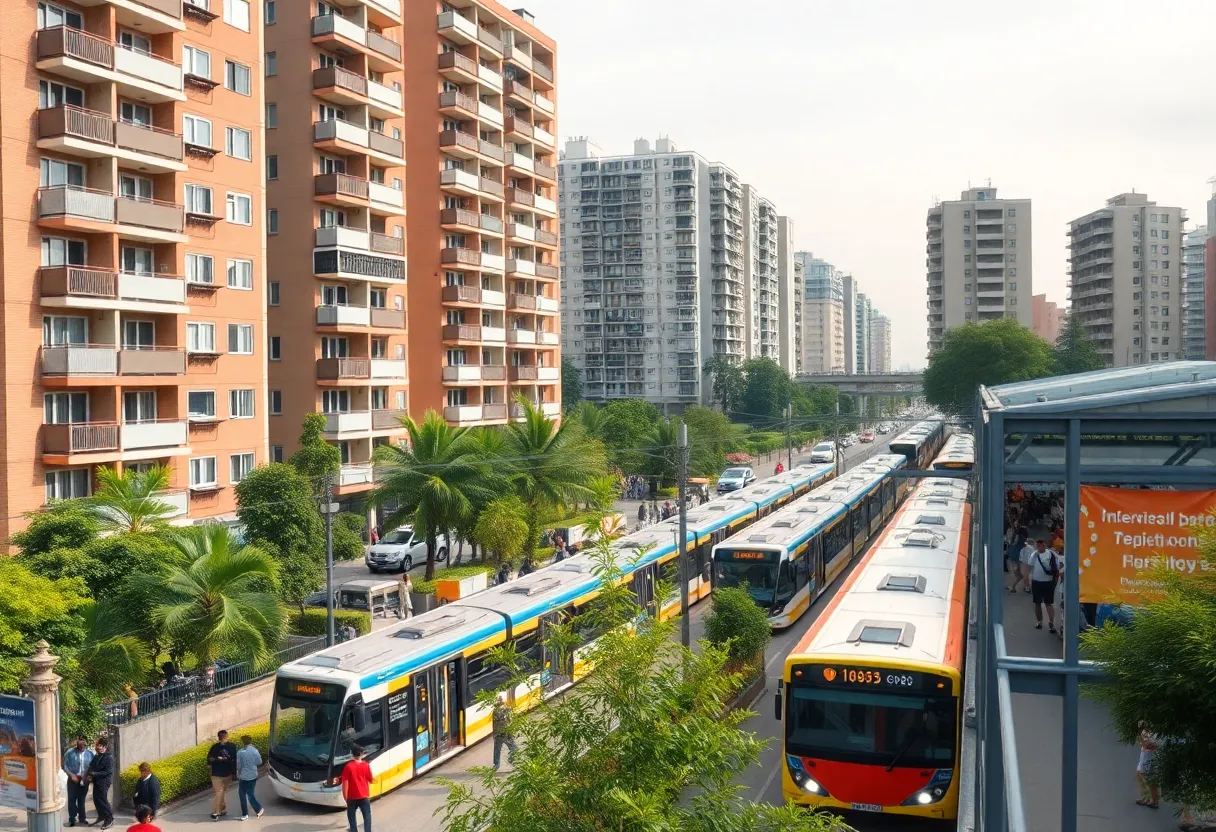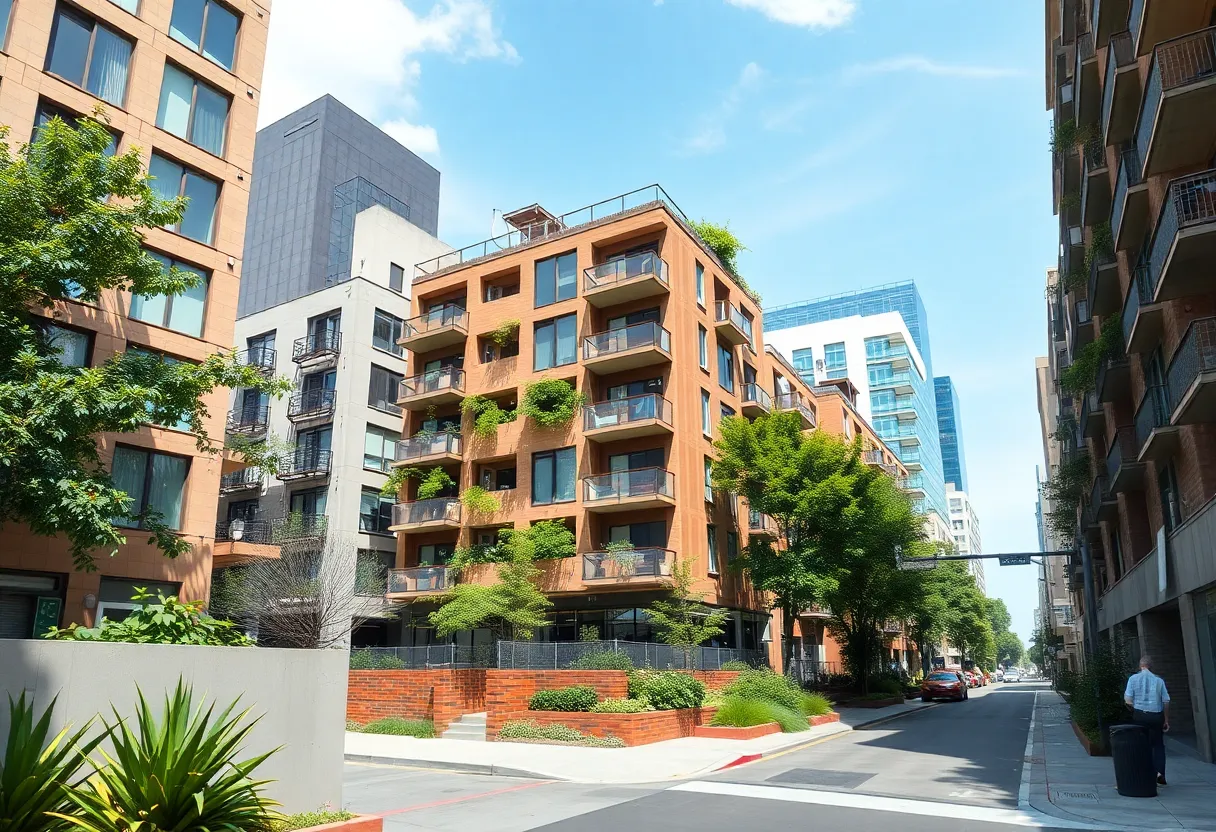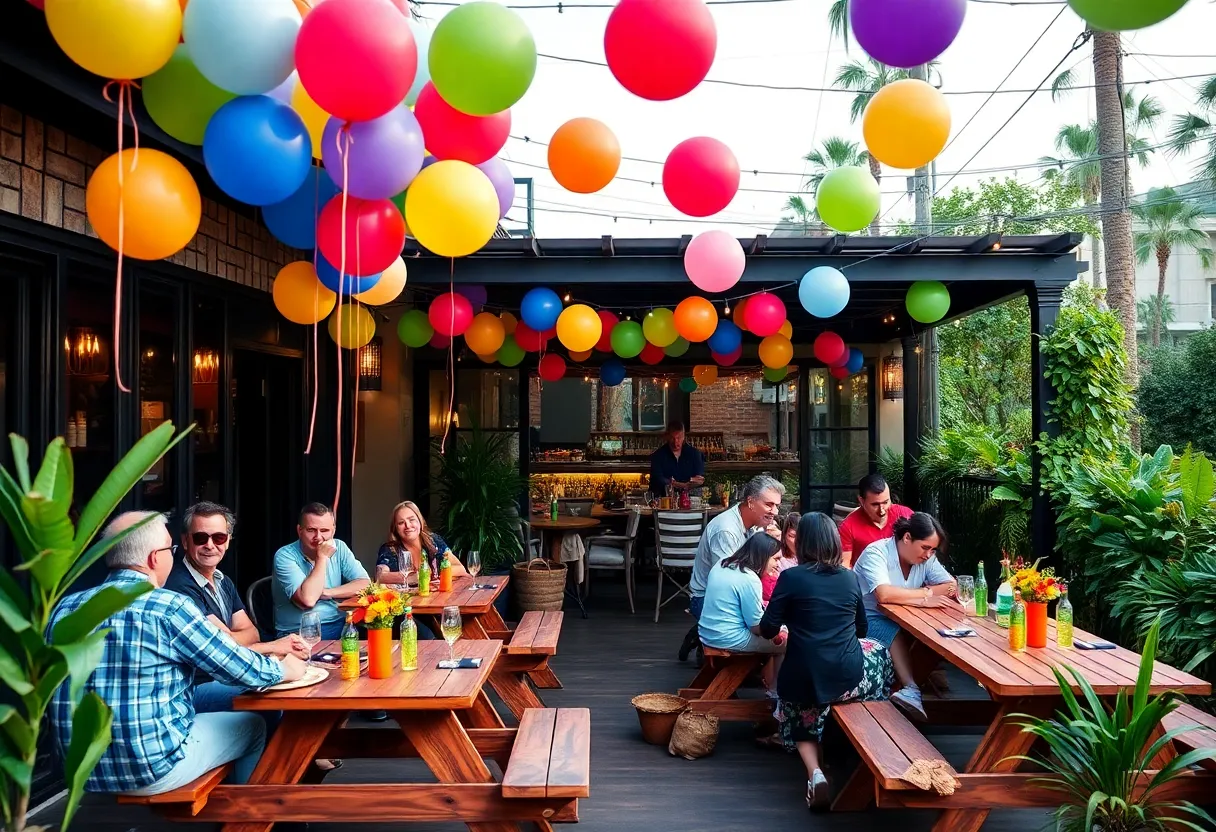News Summary
California’s Senate Bill 79 aims to address the housing crisis by allowing taller residential buildings near transit stations. The bill has passed the legislature and awaits the governor’s approval. While supporters believe it will maximize public transit use and ease housing shortages, opponents worry about community displacement and changes to neighborhood character. The legislation includes provisions for union hiring and safety delays in high fire risk areas, reflecting a complex debate around affordable housing and local zoning authority.
Los Angeles is bracing for significant changes in housing development as California’s Senate Bill 79 is set to potentially transform neighborhoods near transit hubs. The bill, which aims to tackle the state’s ongoing housing crisis, has passed through both houses of the California Legislature and now awaits endorsement from Governor Gavin Newsom. The legislation emboldens new housing initiatives in targeted areas, raising both hopes and concerns among local residents and policymakers.
If signed into law, Senate Bill 79 will override existing local zoning regulations, facilitating the construction of taller residential structures close to transit stations. The bill stipulates that buildings of up to nine stories could be erected adjacent to subway stops, with allowances for seven stories within a quarter-mile, and six stories within a half-mile from these hubs. This initiative is principally aimed at regions in Southern California, Sacramento, and the San Francisco Bay Area.
Concerns from the community have emerged, particularly from homeowners like Brendon Gerisch, who purchased a four-bedroom house in Westchester, Los Angeles, in 2018 seeking privacy and space. He now expresses uncertainty about remaining in his home due to the implications of SB 79, which could bring multi-story residential buildings near his neighborhood.
The controversy surrounding the bill is multi-faceted. Homeowners, renters’ rights advocates, developers, and politicians are expressing diverse opinions on how the enhanced density near transit stations will impact their communities. The Los Angeles City Council voted 8-5 to oppose the bill, reflecting fears that it undermines local planning authority and may lead to the redevelopment of lower-priced neighborhoods, exacerbating issues of displacement for existing residents.
Opponents of the legislation also highlight concerns about the so-called “Beverly Hills carve-out,” a clause that lessens the areas targeted for development in smaller cities while favoring larger urban centers. Furthermore, the legislation includes exemptions for properties under rent stabilization ordinances, which limit rent increases for certain building types, indicating an effort to balance development with tenant protections.
One of the bill’s notable provisions allows local governments to delay its implementation for properties located in high fire hazard areas, an acknowledgment of safety concerns that have risen following recent wildfires in the region. Additionally, there are stipulations for communities wishing to postpone upzoning in historic districts to safeguard well-preserved homes.
Supporters of SB 79 argue that encouraging housing development near existing transit is essential for combating climate change and addressing California’s severe housing shortage. Proponents assert that the construction will maximize the usage of publicly funded transit infrastructure, addressing not only the need for housing but also issues surrounding homelessness and affordability prevalent in California cities.
After rigorous negotiations, the final legislation included compromises such as provisions for union hiring on certain projects, aimed at garnering support from labor groups. Critics, however, worry that the bill may increase density in traditionally single-family neighborhoods, altering the character of these communities.
Lastly, SB 79 exclusively applies to counties with a minimum of 15 passenger rail stations, thus limiting its broader applicability across the state. A recent draft map from Los Angeles planning officials has been released to visually represent how the bill may affect designated areas, further elucidating the potential changes brought on by this new legislation.
Deeper Dive: News & Info About This Topic
HERE Resources
Los Angeles Moves Forward with Costly Homelessness Plan
Los Angeles Faces Decline in Apartment Construction
Los Angeles Proposes Minimum Wage Increase for Construction Workers
Los Angeles Faces Tourism Decline Amid Economic and Political Challenges
California Households to Receive $700 Million in Climate Credit Refunds
Los Angeles Senate Bill 79 Sparks Housing Density Debate
One Beverly Hills Development Set to Transform Local Landscape
Federal Judge Orders Restoration of UCLA Research Grants
Los Angeles Expands Weapons Detection Technology in Transit
LAist Faces Major Funding Cuts from Congress
Additional Resources
- Los Angeles Times: Upzoning Story
- Wikipedia: Senate Bill 79
- LAist: Los Angeles City Council Votes to Oppose SB 79
- Google Search: California housing crisis
- USC Annenberg Media: Greater Housing Density Next Year
- Encyclopedia Britannica: Housing
- Larchmont Buzz: SB 79 Waiting for Signature or Veto
- Google News: California Senate Bill 79
- Los Angeles Times: Lawmakers Pass SB 79
- Google Scholar: California housing legislation

Author: STAFF HERE HOLLYWOOD
The Hollywood Staff Writer represents the experienced team at HEREHollywood.com, your go-to source for actionable local news and information in Hollywood, Los Angeles County, and beyond. Specializing in "news you can use," we cover essential topics like product reviews for personal and business needs, local business directories, politics, real estate trends, neighborhood insights, and state news affecting the area—with deep expertise drawn from years of dedicated reporting and strong community input, including local press releases and business updates. We deliver top reporting on high-value events such as the Hollywood Bowl summer concerts, the Hollywood Christmas Parade, film premieres at TCL Chinese Theatre, and festivals at the Magic Castle. Our coverage extends to key organizations like the Hollywood Chamber of Commerce and Visit Hollywood, plus leading businesses in entertainment, dining, and tourism that define the local economy. As part of the broader HERE network, including HERELosAngeles.com, HEREBeverlyHills.com, HEREAnaheim.com, and HEREHuntingtonBeach.com, we provide comprehensive, credible insights into Southern California's dynamic landscape.





